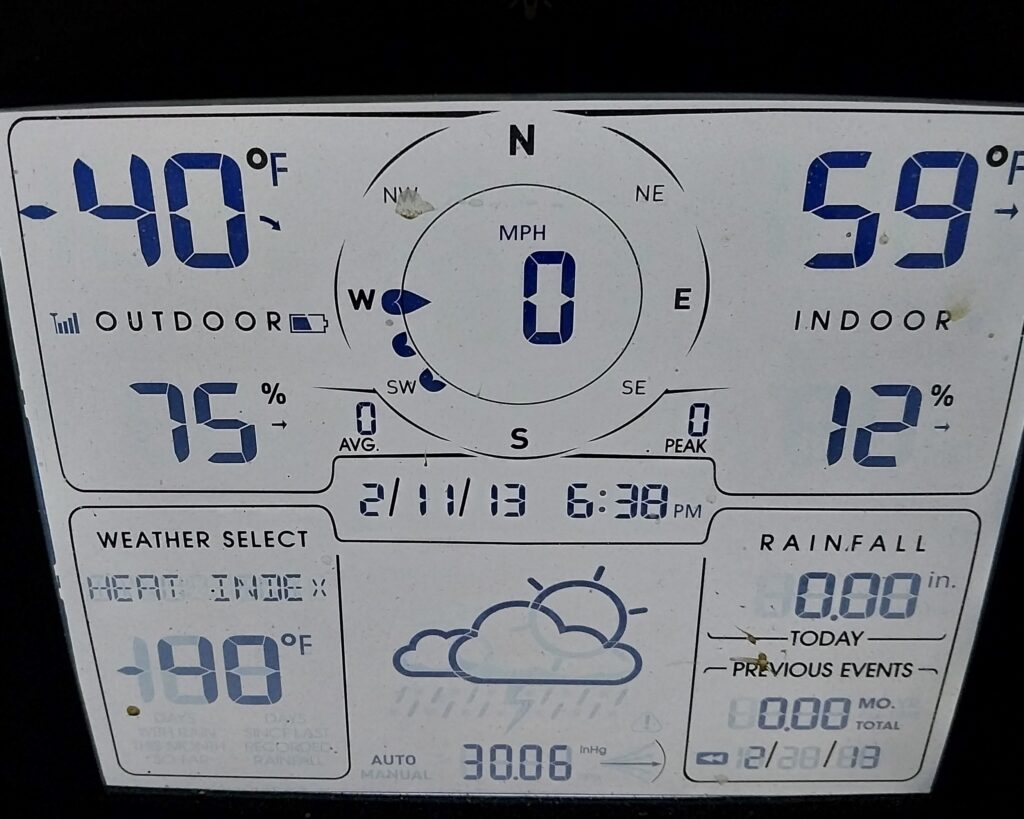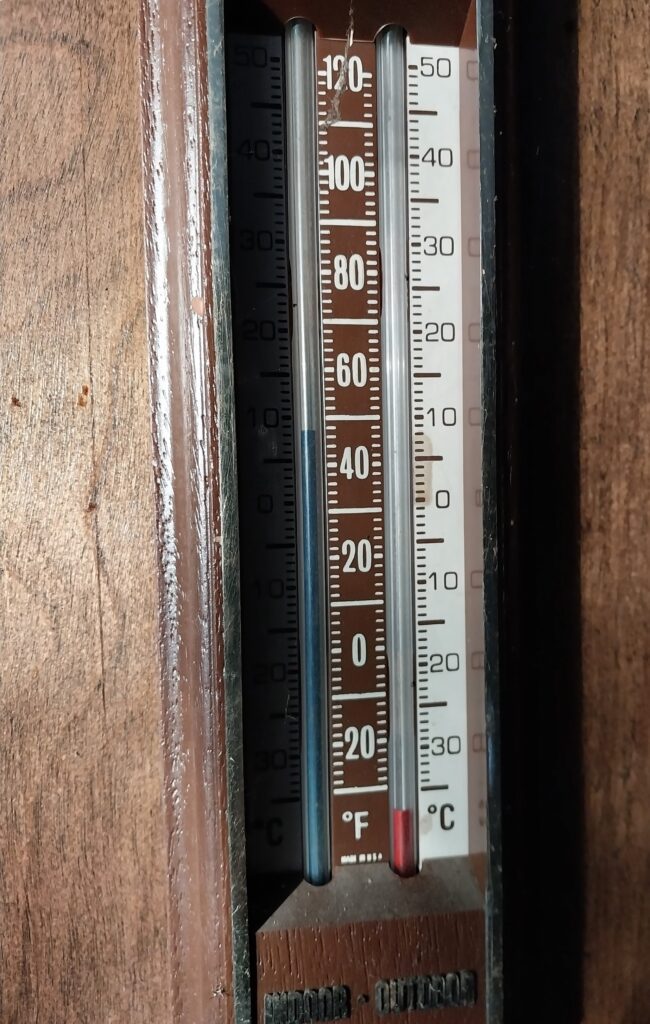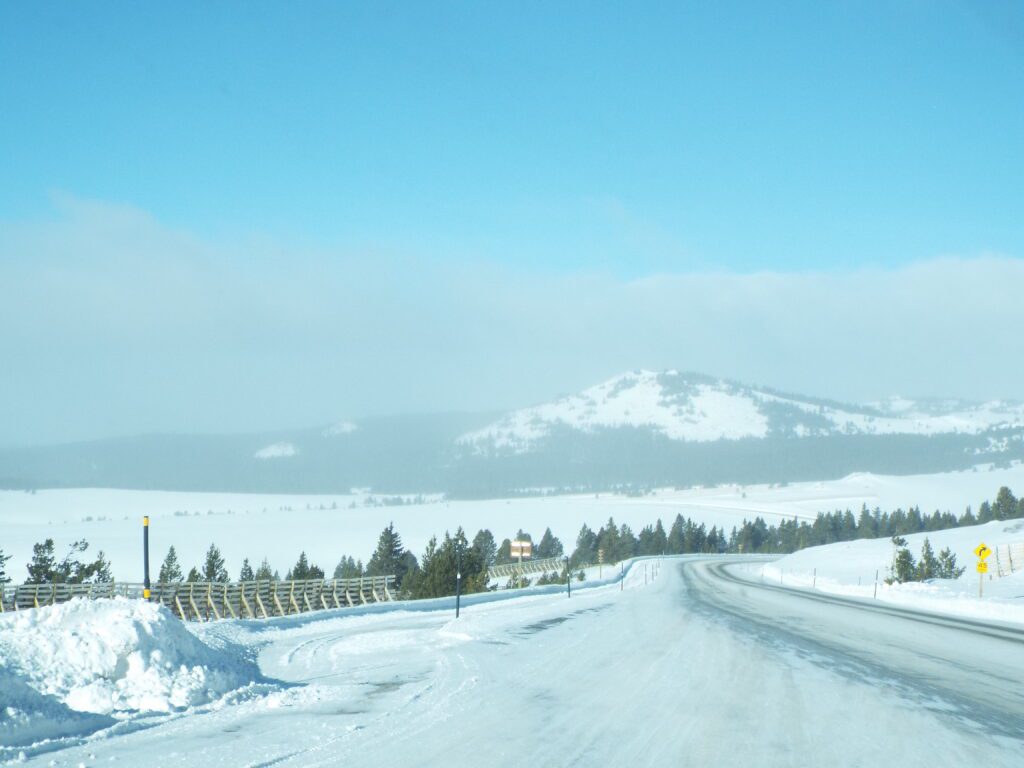News
History: Cold Winters in Wyoming

A couple of weeks ago the history column talked about mild winters, now the weather has turned very cold, so it will look at historically cold winters.
Although the weather in December was very warm and dry, January is not being so charitable. And this seems to be nationwide this year, with blizzards in the Midwest and tornadoes in the southern states.
Here in Sheridan County, the temperature dropped to -40 below on Friday night, with a high of only -9 forecast for Saturday, Jan. 13, with little relief in sight over the next few days.

This from The Sheridan Post, January 25, 1922, talking about winters in the ‘good old days.”
When Real Winter Held Full Sway In Northern Wyoming Old Timer Tells About the Winter When Mercury Froze— In Those Good Old Days— Some Personal Experiences.
Mercury, during the present winter, once for a very few hours dropped to twenty below and on several occasions has flitted caressingly around the ten below mark, and newcomers and tenderfeet have shivered and called it cold, but the old timer insists that the wintry blasts of ’22 are only exhilarating breezes— simply cooling zephyrs, straying from some alien north land, when compared with some of the winters of the “good old days.”
“Snow used to begin falling along about the middle of November,” the old timer will tell you,”And by the first of December it would be two or three feet deep, and there it would stay until late m the spring.” When questioned for details their memories become hazy as to the exact dates and it usually happens that it always narrows down to the winter of 1887-8.
That is the year they all remember for it is one they cannot forget. That was before the advent of the weather station and perhaps the record kept was not absolutely accurate for it was so cold mercury froze, and alcohol was too much in demand to waste much of it in making thermometers, but the old timer says it was 40 below and stayed there for a month.
Feeling doubtful as to the accuracy of the old timer’s memory, the cobwebbed files of The Post were referred to and there under date of January 19, 1888, is found this information:
Mercury Frozen “We have been experiencing probably the coldest weather within the ‘time when the memory of man runneth not to the contrary” for the past week or more as the following record will show:
“January 12, 15 below. “January 13, 32 below. “January 14, 55 to 60 below.” “January 15, 50 below. “January 16, 46 below. January 17. 40 below. “January 18, 13 below.”
“On Friday, the 13th. the mercury did not rise higher than 9 degrees below and remained at that point only a short time. At 4 p. m. it was 20 below and at 7 n. m. it was 30 below and kept falling through the night. On the following morning every thermometer had registered its capacity at from 53 to 58 degrees below and froze in or was broken.
On Sunday and Monday mornings: the capacity of our thermometers was found to have been again taxed almost to their utmost. The extreme frigidity of the atmosphere as indicated above will doubtless strike terror to the hearts of our eastern friends who are compelled to abandon almost all kinds of outdoor employments at 20 below zero and will be surprised to know that a number of persons have come in during the week from Big Horn, Buffalo and other points ranging from five to 40 miles. When they are informed that owing to the rarity, ‘ pureness and dryness of the atmosphere, and absence of either, wind or other storms forty percent or even fifty per cent below zero does not chill the blood or produce so much suffering as a much higher temperature in more moist atmospheres, they will understand the situation better. ‘”
In his journals, Clearmont rancher Wallace Vannoy recorded the weather nearly every day, especially on days of extreme temperatures. Here are a few of his notes.
“Jan 1, 1978 – 25 below this morning. Skies are clear. It was -8 on this date last year. Jan 2, 1978 – Not so cold this morning. Just 5 below. Put cake (grain cake) out for calves. Also 20 bales of hay. Dec. 30, 1978 — 30 below this morning. Dec. 31, 1978 – Temperatures around the area from -35 to -48. it is -35 here. Fed in Buffalo today, must be -20 or colder. Feb. 10, 1979 – Just 10 below again this morning, was -30 on this day last yer. Feb. 16, 1979 – Reg and Doug helped me feed, 10 below. Jan 7, 1980- 10 below this morning. Warmed up to 10 above.
Notice that, unlike the “eastern friends who are compelled to abandon almost all kinds of outdoor employments at 20 below zero”, Wyoming ranchers HAVE to work outdoors in all weather. Livestock need fed, water holes need to be opened for them. Today, with hydraulic hay bale feeders and stock tank heaters, life is easier, but back in the early days, hay was baled in small square bales, and had to be fed off the pickup in the snow and the wind and the below zero wind chills. Reservoirs and stock tanks furnished water, and had to be chopped open with an axe so the livestock could drink.

The above newspaper article continues. “Although the mercury has fallen quite low almost every night since Christmas and some days has not risen above zero, we have had but a few inches of snow and not suffering of any consequence either of persons or among stock has prevailed. Reports from almost every quarter indicate that stock is doing well and if we have no worse weather than we have already had there will be but small loss to the stockmen and some surplus hay will be left for another season. Had it not been for an almost entire absence of winds or perceptible breeze more suffering would doubtless have ensued and if the weather should not moderate soon, severe consequence may follow.”
Only Part of the Story – The Post of yesterday tells part of the story but not all. The big loss of stock had not yet become known, and a later issue of the paper probably tells a different story, for the loss of stock during that cold spell was something terrible. Practically every herd in the country was decimated and many wholly wiped out. There were no sheep in Sheridan County then—the cattle having “petitioned” the owner of the only band brought in to at once remove them to greener pastures – but over in the Basin county they “died like sheep.’ whole bands being frozen.
In those days little hay was put up, and when the deep snows fell, a chinook wind came, then cold weather a crust was formed, which buried all the feed under a crust of ice two feed thick where no stock could reach it. Without feed the stock weakened and the cold finished them.
But even hay would not have saved all the stock. Some few settlers who had come lately from the middle west still clung to their old habits, and put up hay to carry their small bunches of stock through the winter, but the cattle would stand and eat hay and freeze to death with their noses stuck in the rack.
The experiment of standing in the corral and using a whip to make the cattle exercise was tried with only limited success.

Buried the mercury, or alcohol, on that thermometer.
Personal Experiences – The personal experiences of those who lived in northern Wyoming during that cold spell would fill a book, in a fact a whole library. George Lord started from what is now the OW but when he reached Deer Creek he was so cold and his horse so worn out that he decided to camp. He built a fire and managed to exist through the night, and spent the whole of the next day making fifteen miles to his destination.
Tom Stout and John Early drove a four mule team with a sled to Prairie Dog after a load of hay, they put on about 800 pounds and started for Sheridan but (got) stuck while crossing a slough. That was on February 1, and Tom says it was the coldest day he has ever experienced and as an old-time freighter, Tom certainly knows a cold day when meets it. Finding they could go no further with the sled and unhitching the mules they started to make their way out. To ride was out of the question, so they tailed the donks and drove them in front.
There was a blizzard blowing that it seemed impossible to face and the men say that in two minutes ice would gather on their faces until their eyes were frozen shut and they would have to keep clawing the ice away in order to see. With the perversity of a donk those mules failed to track, and the men following behind soon discovered they were traveling in a circle around a patch of brush.
Suddenly from out of the storm a voice was heard. “Some body is lost,” said Early, “Let’s go and help.” “Lost, the dickens,” was the paraphrased and deleted reply of Tom. “So are we, what good will it do for us to find them.” Finally however, the two parties got together and the others proved to be Race Burns and Hank Schuler, who had started out to find Early and Stout, and the men finally succeeded in reaching a house, although Early’s face was badly frozen.
Frozen Words – The next day Mr. Bums started out for town on horseback but his horse played out, but finding a hay stack, the rider brought the horse some hay, then wrapping the saddle blanket around his head he started to find shelter. He managed to find a ranch house and approaching saw a man and tried to call for help, but he was so cold he could not make a sound, “and” said the old timer who told the story, “when Race Burns gets so he can’t talk, you may bet he was purty dern cold.”
There is a version of that affair that differs just a trifle from the above. It is to the effect that Burns did yell but that the cold was so intense that his voice froze as soon as the sound left his lips, and that later when a warm chinook did come and the sounds thawed out, one day there was a yell wafted over the prairie that scared all the coyotes out of that section of the country.
Similar experiences were legion. It was a new country with houses far between and the storm swept the prairies unobstructed. It was a winter that will be long remembered, — there came an Indian scare but that is another story and must, await another day for its telling.

On the morning of January 13, the temperature outside of Clearmont, Wyoming read -40. In fact, it is colder here than it is in Utqiagvik, Alaska, formerly known as Barrow, which is located north of the Arctic Circle, and is the northernmost town in the United States. According to the Weather Channel, it is 7 degrees there today, with readings of -10 in Fairbanks and 16 above in Anchorage. According to Weather Now, Amundsen-Scott, Antarctica (NZSP) it is -29 degrees with ‘light snow grains.’ Gotta love Wyoming.


Mike Londe
January 14, 2024 at 7:36 am
I worked in oil exploration in Alaska and Wyoming. In Alaska we had a guideline of -50oF as our cutoff for doing work, not that we paid much attention to it. In Wyoming we worked in all conditions except blizzards. Temperatures were generally not a consideration. It was whether your vehicle would start. This was back in the time before OSHA or other agencies. We just did what we needed to do to get a job done.